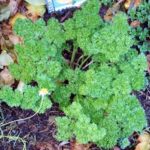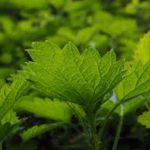Pepper – The Most Influential Spice
Pepper is considered the most influential spice for the key roles played both in trade and world politics. Black pepper is one of the oldest and most popular spices of the world. It is a native of the ancient Malabar Coast of India (the Western Ghats in Kerala).
What is a spice?
The word spice refers to any dried part of a plant used for seasoning and flavoring a recipe. It is never used as the main ingredient of the recipe. Similarly leaves are not included under the definition of spice. The green leafy parts of plants used for seasoning and flavoring are considered herbs. Excluding leaves, all other parts of a plant used for said purposes can become spice. Dried bark, roots, berries, seeds and twigs can become a spice. Cinnamon (bark), cardamom (seed) and All spice (dried berry) and Cloves (flower buds) are examples of widely used spices. These are mainly used in dried form. But herbs can be used in dried form and fresh. India accounts for 75% of the entire production of world's spice.
Pepper and history
It has carved a place in the history as it has been highly valued since ancient times. The attraction towards pepper and other spices brought both Europeans and Americans to Asian continent. It is estimated that pepper has been cultivated in India for more than 2000 years. European demand for pepper led to the discovery of sea routes to the spice growing east in the 15th century. In Roman ports, it was traded ounce for ounce with precious metals. Its non-perishable character made it acceptable as currency during middle ages. It was prized for its medicinal values and culinary uses. Its pungency alone was sufficient to increase the demand for food. Over the centuries, pepper has been used by various countries and cultures as seasoning, spice, medicine, currency and sacred offering.
Major cultivators of pepper
Vietnam, India, Indonesia and Brazil are the major cultivators of pepper. It is cultivated in more than 26 countries spanning across Asia, Africa, pacific region and Latin America. In India, the state of Kerala accounts for more than 97% of total production in the country. Other major contributing states are Karnataka and Tamil Nadu.
Pepper plant
The pepper plant is an evergreen perennial plant that attaches itself to different types of plants and trees by means of aerial roots. It has a shallow root system. The plant is a spreading vine. Leaves are 5 to 10 cm long and 3 to 6 cm broad, oblong and pointed at the tips and arranged alternately. Tiny white flowers that converge in oblong spikes later form clusters. Fruits are round berries, 4 to 10 mm in diameter, that converge in oblong clusters. Each berry has a single spherical seed enveloped by the flesh.
Uses of pepper
The healing properties of pepper have been recognized by many systems of medicine. The traditional Indian medical systems Ayurveda, Sidha and Unani utilize the healing properties of pepper. Peppercorns are used in variety of indigenous medicinal preparations. Pepper promotes free flow of oxygen to the brain, enhances digestion and circulation, stimulates the appetite and helps maintain health of respiratory system . It is a good source of vitamin B. It is also a source of minerals such as potassium, calcium, magnesium and zinc. It contains an enzyme called piperine. It increases absorption of nutrients like vitamin B, selenium and beta carotene.
Another major use is a condiment. It has had a place on Western dining table, along with salt, for hundreds of years. Whole black peppercorns are roasted and grounded and then mixed with other ingredients to make mixes such as garam masala, sambar powder etc widely used in Indian cuisine. Tempered in ghee, peppercorns are used in dishes like biriyanis, pulaos and curries. Powdered pepper is used in soups, stews and stocks for its pungent zing. It is key ingredient of rasam , a popular spicy soup of south India.
Some funny facts about pepper
• Black peppercorns were found stuffed in the nostrils of Egyptian Pharaoh Remesses II. It is belived that it was done as part of embalming process
• When the Mary Rose, an English ship that sank in 1545, was raised from ocean floor in 1980s, every sailor was found with a bunch of peppercorns, one of the most valuable assets of that time.
• Pepper was considered one of the five essential luxuries upon which foreign trade with Roman empire was based. The other four luxuries were African ivory, Chinese silk, German amber and Arabian incense.
• A mixture of black and white peppercorns is called a mignonette.









